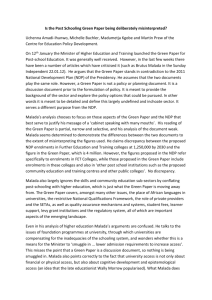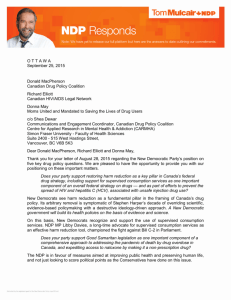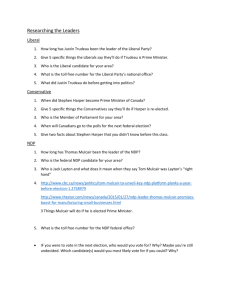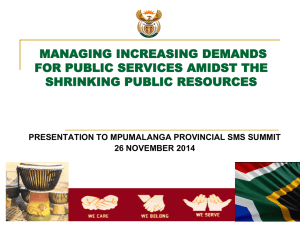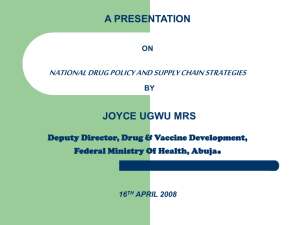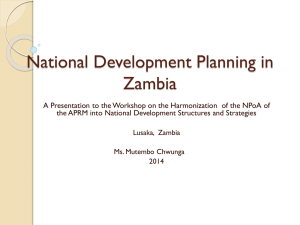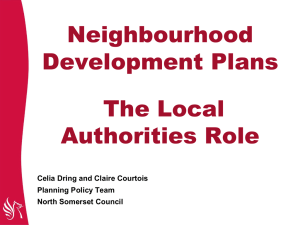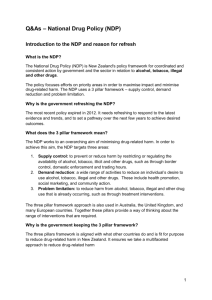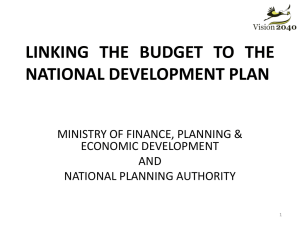check presentation
advertisement
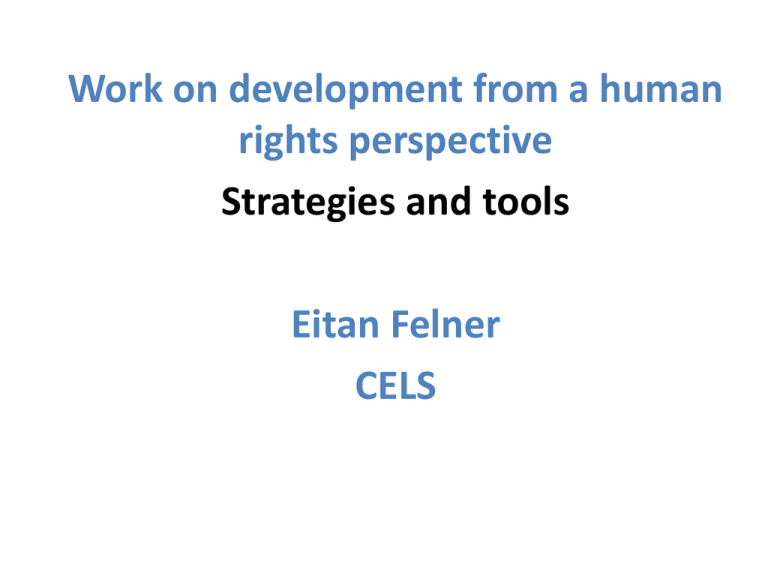
Work on development from a human rights perspective Strategies and tools Eitan Felner CELS Why a human rights approach to development? #1 Challenges of human rights + development: so closely entwined that neither can be tackled effectively without addressing the other Problems of development: the gravest human rights concerns “Poverty and inequities between and within countries are now the gravest human rights concerns that we face” Louise Arbor, then UN High Commissioner for Human Rights Human Rights violations – a key reasons for persistent poverty and deprivation •Corrupt governments that steal public resources Instead of •Spending on ‘white elephant projects’ that squanders state resources Inequalities in education and health among ethnic groups Overall insufficient resources for social services Due to Due to Addressing basic needs of the poor Discriminatory policies in public spending Capture of state by economic elite Why a human rights approach to development? #2 Intrinsic Value • Provides a universally shared legal framework for development • Articulates an ultimate goal for all development activities Brings about a change of perspective • People: from the objects of development to the subjects of rights • Deprivations in development (lack of access to education, health, clean water, food, etc): From inevitable tragedy intolerable injustice Instrumental Value • Reinforces focus on inequalities and discrimination • Enables to ascribe responsabilities (to • various duty-bearers) • Provides voice and empowers excluded or vulnerable groups • Helps strengthen democratic institutions of the state Poverty Reduction: From charity to an obligation Economic growth and human rights • Economic growth: instrumental for the realization of human rights. • However, economic growth must be achieved in a manner consistent with human rights principles. • Need of policies and institutions consciously designed to convert resources into rights Tool #1 - Integrating a human rights-based approach into National Development Plans What is a Human rights based approach to development (HRBA)? Contents Process Human Rights Obligations and Standards Human Rights Principles Integrating a HRBA in all phases of National Development Plan Proposes corrective measures to incorporate the rights approach in content of NDP and its process of its formulation, implementation, monitoring and evaluation Identification and analysis of development problems Monitoring and Evaluation of NDP Setting development goals, policies and resource allocation Implementation of NDP Integrating a human rights-based approach into National Development Plans The case of Ecuador Realization of human rights – the goal of National Development Constitution of Ecuador 2008 Art. 3 It is the primary duty of the State to guarantee the exercise of rights without discrimination Art. 85 Public policies will be aimed at the realization of all rights Art. 275 The State will plan the development of the country for the fulfillment of rights Critical analysis of application of human rights principles in all phases of National Development Plan Participation To what extent the mechanisms set up by gov’t for participation in the formulation of the PND were sufficiently inclusive, enabled informed participation and the inputs from citizens were adequately taken into account in what actually was incorporated into the Plan? Workshops for citizen participation in formulation of NDP - Were participants of the workshop given a draft of the NDP or list of objectives for comments or suggestions related to each of the objectives? - Did workshops had an opportunity to comment on the objectives and goals of the PND? - Could workshop participants prioritize the proposals made? - Were there mechanisms to give citizenship opportunities to comment on the PND out of the workshops? - Is there a publicly available document that summarizes which of the various proposals made at the workshops were actually incorporated into the NPD? Critical analysis of application of human rights principles in all phases of National Development Plan Accountability Annual reports of the President to Parliament (Asamble Nacional) about the implementation of the NDP don’t include detailed data on the extent that each goal of the Plan is being fulfilled (comparing the base-line, the current level and the value established by the NDP) The Parliament did not to implement a norm established in the 2008 Constitution that orders to set up a special commission of the Parliament to analyze the annual report During the presentation of the annual reports about the NDP, there is no opportunity for an interactive discussion between the President and the members of Parliament on its results Some recommendations to integrate a HRBA into Ecuador’s next National Development Plan Setting development goals in NDP Goals of PND reflect in concrete and quantifiable form the commitments that a government undertakes vis-a-vis the objetives and policies for the development of the country • Take into account human rights commitments and recommendations by human rights mechanisms in selection of goals and determining their value targets • Reduce the number of goals in the NDP to reflect more clearly a limited set of prioritized government actions (in order to strengthen transparency and accountability of the government vis-à-vis its development priorities) • Incorporate disaggregated goals in the NDP to help focus development efforts on most excluded people and contribute to tackle inequalities in the enjoyment of rights Implementation Phase – Budgetary matters Monitor equity in budget allocation, (e.g. what is the distribution of spending within specific sectors between provinces, ethnic groups, etc.) Institutionalize mechanisms that allow the use of extra budgetary spending only under strict conditions to strengthen participation, transparency and accountability Provides recommendations to strengthen the role of the NDP as a guiding instrument of Public Policy Equality and non-discrimination Include in NDP affirmative action policies vis-à-vis traditionally excluded groups in order to ensure substantive equality in the enjoyment of rights Set together with representatives of indigenous peoples development policies and strategies that have an impact on their individual and collective rights Address persistent patterns of gender discrimination (e.g. unequal pay for similar jobs) Provide incentives (e.g. higher salaries) to encourage experienced service provides (e.g. teachers and doctors) to work in remote areas of the country Adapt employment generation strategies to economic, social and cultural characteristics of each region in the country Establish Equality Councils responsible for incorporating equality concerns in public policies Tool #2 – Human Rights Impact Assessments HRIAs – a new human rights tool WHAT ARE HRIAs? Human Rights Impact Assessment (HRIA) - an instrument for examining policies, legislation, programs and projects to identify and measure their effects on human rights. GROWING INTEREST ON HRIAs Growing demand has emerged for various actors to undertake HRIAs before adopting and implementing policies. Potential contribution of HRIAs • guide policy making, • foster public participation in the formulation and monitoring of development policies • strengthen accountability about these policies • help to empower rights-holders by making it easier to demonstrate the cause-effect relationships between policies, projects and human rights outcomes HRIAs and other types of impact assessments HRIAs grew out of other types of impact assessments: environmental impact assessments (EIAs) and social impact assessments (SIAs HRIAs are based on normative framework of international human rights law This framework lends moral and legal legitimacy to the whole exercise: human rights have become the dominant language for social justice claims in many parts of he world. Level of detail and specificity in which human rights issues are addressed and in the manner in which they are covered (equality, participation transparency and accountability) HRIA methodologies HRIAs: an evidence-based exercise, which aims to contribute to a more informed policy-making process. effectiveness of HRIAs largely depends on the robustness of the methods used and the quality of the evidence gathered by those methods. HRIAs are often complimentary to other types of IAs and are often conducted on their heels. whenever possible, human rights assessors build on the research conducted by these other assessments and other studies, while employing a different perspective to interpret the impacts foreseen in light of human rights standards. Potential contribution of HRIAs Potential contribution of HRIAs
